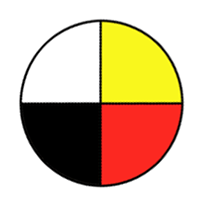Investigate how reversible and non-reversible changes, including changes of state, alter materials.
SI
| (a) |
Pose and refine questions for investigation related to changes in materials. |
| (b) |
Demonstrate changes (e.g., cutting aluminium foil, forming clay, breaking wood, and crumpling paper) that can be made to an object without changing the properties of the material making up the object. |
| (c) |
Explore how characteristics and physical properties of materials may change when they interact with one another. |
| (d) |
Predict whether changes to a material will be reversible or non- reversible. |
| (e) |
Observe and classify changes to materials as reversible (e.g., melting ice cube, dissolving salt in water, blowing up a balloon, and folding paper) and non-reversible (e.g., paper burning, egg cooking, bicycle rusting, balloon popping, and apple turning brown). |
| (f) |
Differentiate between changes to materials that occur rapidly (e.g., wood burning, explosives detonating, balloon popping, and glass breaking) and those that occur over extended periods (e.g., bicycle rusting, paint fading, and newspaper yellowing). |
| (g) |
Provide evidence of the six changes of state (i.e., evaporation, condensation, freezing, melting, sublimation, and deposition) of matter in the environment (e.g., water evaporating from wet clothes, steam condensing on the wall of a shower, lake freezing, butter melting, ice cube sublimating in the freezer, and frost forming on a car window). |
| (h) |
Demonstrate that changes of state of matter are reversible when heat is applied or removed. |
| (i) |
Compare the characteristics and physical properties of a material in its solid and liquid states (e.g., compare the mass of ice cubes with the mass of liquid that results when they melt). |
| (j) |
Design and carry out a procedure to determine whether the mass of materials changes during reversible and non-reversible changes. |
| (k) |
Follow established safety procedures for working with heating appliances and hot materials (e.g., switch hot plates off immediately after use, use tongs and insulated mitts for carrying hot materials and for tending a fire). |
| (l) |
Discuss the characteristics of fair tests and why scientists value the importance of conducting fair tests for gaining knowledge about the physical properties of materials. |
| (m) |
Investigate methods, such as firing clay and forming alloys (e.g., brass, bronze, white gold, and sterling silver) that artists use to change materials based on their understanding of the properties of materials. |
| (n) |
Develop conclusions about the effects of reversible and non- reversible changes on the characteristics and physical properties of materials. |
















